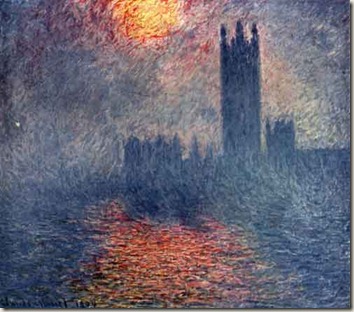I visited the Museum of Modern Art in San Francisco recently. I’m not very knowledgeable about art, but I always enjoy it when I take the time to pause and pay attention. In the abstract art wing, there were a ton of fantastic paintings, none of which made me want to say “my five-year-old could have done that!”. But then I came across the White Painting by Robert Rauschenberg.

It is a white canvas coated in white paint. I have to admit that my first reaction was somewhere along the lines of, “Give me a break! That’s not art!”. But I took the time to pop on the audio tour and was surprised to find myself quickly recognizing the value of the piece.
It turns out that Rauschenberg painted the White Painting as an intentional attempt to see how much content he could strip out of a painting and still have it have meaning. When he showed the paintings in 1951, it created a mini-scandal in the art world as many people had the same reaction I did and saw no value to the work.
However, what the White Painting does is create an unique opportunity for the viewer to contemplate what it is that makes any piece of art meaningful. Is a white canvas with a blue square on it art? How about a canvas splattered lightly with paint? What about a heavy splatter? What if the paint is “splattered” so that it gives you an impression of images that you recognize. Suddenly we’re talking about Monet, widely considered one of the most talented artists of all time and leading example of Impressionism, a style of painting of which nobody questions the artistic value.

Are you enjoying this article? Read more like this, plus SSIR's full archive of content, when you subscribe.
What the White Painting does is create an experience that forces the viewer to come to terms with their own understanding of the value and meaning of art. By achieving this goal, the White Painting becomes infused with value and meaning of its own.
I think philanthropy might be undergoing its own “abstract” phase. Is microfinance “philanthropy”? What about for-profit microfinance? Is corporate philanthropy good? Is Groupon a social enterprise? How about Chevron (they provide the energy that drives the world after all). Should we celebrate the advent of charitable giving being embedded in consumer transactions or despair? If you add a Facebook Cause to your profile are you a philanthropists? Or are only gifts of time and money “really” philanthropy?
Not everything is art. Art has meaning and value. Not everything is philanthropy. Philanthropy has meaning and value.
But with the White Painting we see the ultimate stripped down attempt at art and amazingly we find that it has meaning. I think we should take the same approach to thinking about philanthropy as we contemplate the value and meaning (or lack thereof) in new efforts to create social impact that stray far outside the familiar realm of donating and volunteering.
Abstract art did not degrade the value and meaning of the great works of classical art. Instead, abstract art helped open society’s eyes to understanding the very essence of artistic expression.
In a world where even traditional donations are deemed to not have value if they do not conform to the values of the viewer, it would be a great thing for an era of Abstract Philanthropy to open our eyes to understanding the very essence of the philanthropic act.
Support SSIR’s coverage of cross-sector solutions to global challenges.
Help us further the reach of innovative ideas. Donate today.
Read more stories by Sean Stannard-Stockton.

